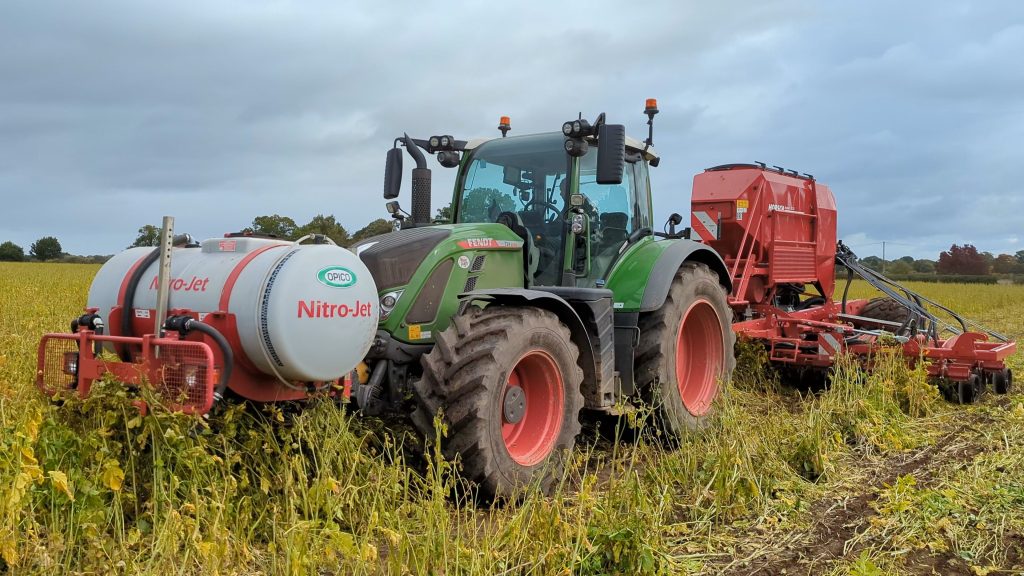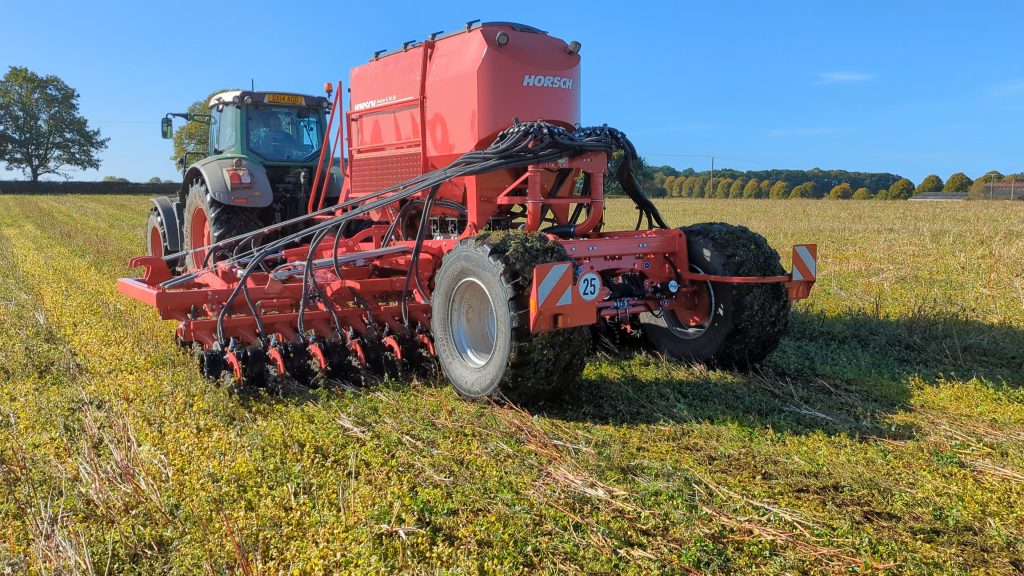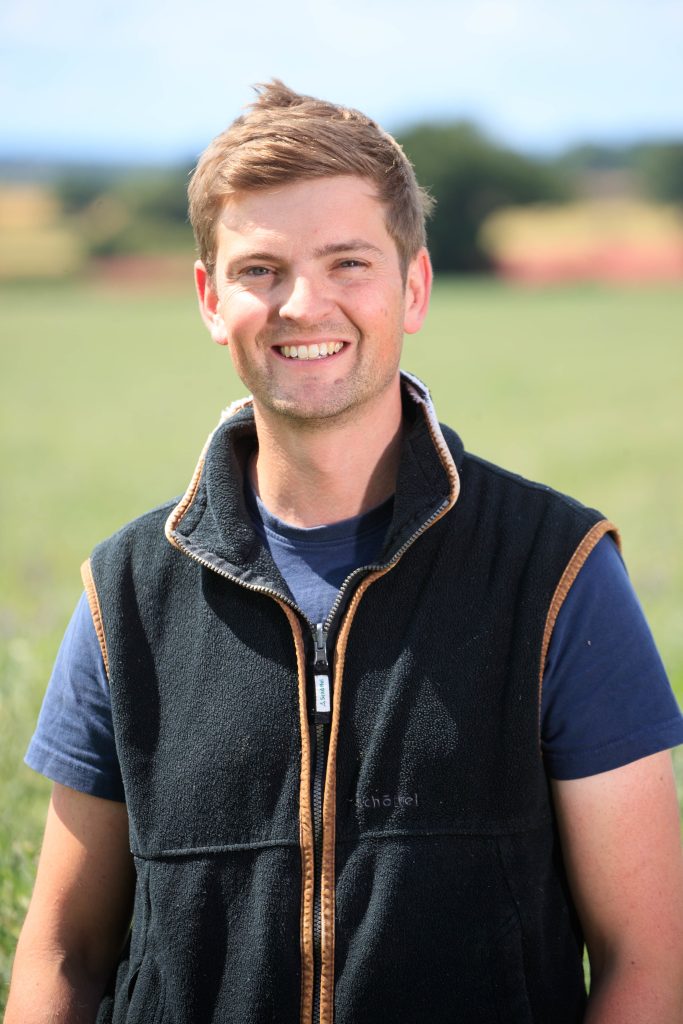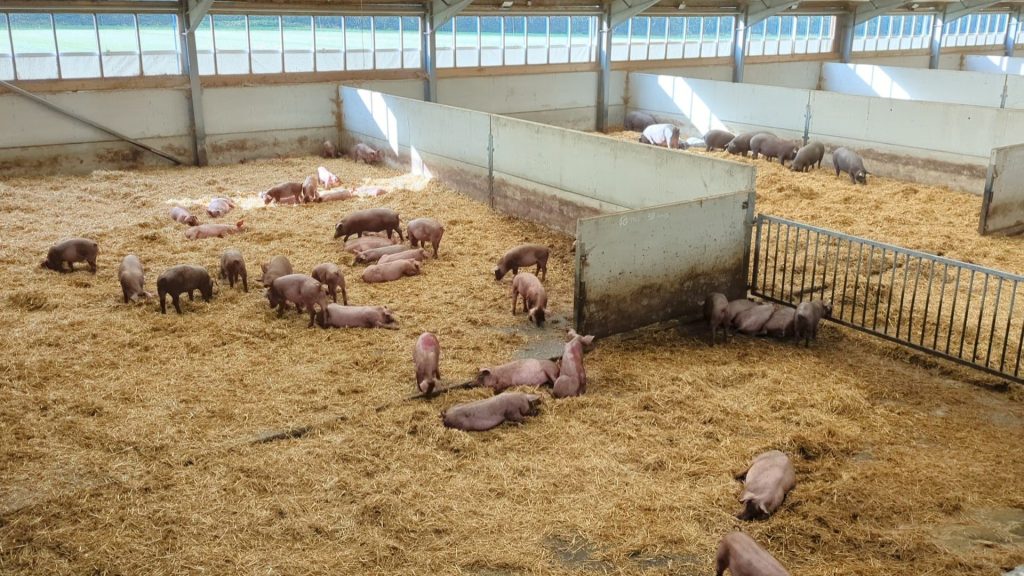Arable & Pig Producer – Newport Shropshire
200ha Owned (Wheat / Barley / OSR / Sunflowers / Beans)
350ha Contracting
100 Sow Indoor/Outdoor Herd
Our arable business has always traditionally been a poor relation to the livestock enterprise. It has however dutifully had the important task of growing combinable crops to feed the hungry mouths of a 600 sow herd producing 17,000 pigs per year, at least this was the case till very recently. Market volatility and spiralling input prices ultimately were the start of us questioning the status quo in 2021 and it didn’t take too long to realise that our business needed to head down a different path.
Big changes have happened within the last few years, with the biggest being the exit from the indoor pig industry and the move to put agroecology at the centre of everything we do on the farm.
Before the pigs were the dominant enterprise on the farm, the arable land was farmed intensively with a three course rotation of potatoes / sugar beet and wheat. This, alongside a routine use of power harrowing and subsoiling took its toll in leaving our sandy soils prone to slumping and when tested scoring poorly in many other areas of soil health.
Our move to focusing on soil health started in 2018 with a change agronomist. We are extremely lucky to have Ed Brown (Head of Agroecology for Hutchinsons) as our agronomist and I have no doubt in my mind that he has been pivotal to our business in challenging what and more importantly why we do things. We were also kindly asked to be the national agroecology site for Hutchinsons as part of their Helix Farm network. Undoubtedly this has assisted in us running trials to find out what works and more often than not what doesn’t work on our farm. Trials and testing are now the cornerstone for how we make change whilst not exposing ourselves to additional risk.
One of the first changes was doing the thing that everyone told us not to do, which was to buy a new drill. This was in my eyes a necessity, as we had no choice but step away from the combination drill if we ever hoped to start and build better soil structure. We bought a demonstrator 750a and swiftly signed up to an operators course hosted by Simon Chiles. Straight away this gave us confidence that was needed in such a radical change in how we established our crops. The autumns of 2019 and 2020 allowed us to cut out teeth in less than ideal conditions, but the disappointment of slightly lower yields were eased by lower costs which kept margins at parity. Nitrogen rates are starting to come back slowly (circa 20%) but it was only relatively recently that we brought legumes into the rotation and have now started to implement other tools such as foliar N and SAP Analysis to look at improving our efficiency further.

No one really can prepare you for the change in mindset required when going down the regenerative route. From ignoring how the field looks after direct drilling to ignoring the itch of recreational tillage, it’s been a learning curve every step of the way.
Getting living roots in the ground for as much of the year as we can, feels right in line with all the other changes we’ve made. We grazed our cover crops with sheep last year and we’ll look to repeat this again next spring. It’s been our first season this autumn drilling everything directly into catch crops. The biggest benefit to date is how well the ground walks even after the monstrous deluges of rain that we have had in previous weeks.
We are now three years into using untreated home saved wheat blends which seems to be assisting in lower fungicide usage as well as maximising genetic diversity within the crop. Companion crops of buckwheat and clover are grown with the OSR and a further drive to look at how best to use bi and poly cropping will begin again in the spring.

Our nemesis on the farm is undoubtedly herbicide resistant ryegrass. In a 5-6 year timeframe it has spread to a number of fields on the farm whilst we figured out transmission routes and resistance patterns. Now we are taking a much more robust approach to the weed. Firstly harvest hygiene is a number one priority with the combine being blown down with a compressor after every field. A chaff lining kit has been fitted to the combine in an effort to reduce weed seed return on either side of the swath. The one remaining change of the year will be to install a water treatment plant to clean up our borehole water and make it more suitable for spraying and biological amendments.
Our main investment this season has been the move away from the John Deere 750a to a Horsch Avatar. We saw clear benefits from last year’s demonstrator with a heavier closing wheel, more flexibility of drilling multiple products and easier calibration. The big move agronomically was to place liquid products down with the seed. We bought a second hand Opico Nitro Jet front tank and bought the rest of the kit from Simon at S&K Sprayers. With Johnson-Su bioreactors and vermicomposters in the shed, it has been great to make a start this year with placing these products down with the seed in furrow or as a seed drench. The OSR went in a little later than we had planned this year (Circa 21st August) but the addition of liquid fertiliser, seaweed and liquid fish seemed to improve crop vigour compared to control plots without any.

Change has definitely brought about new opportunities for our farm in a way that I could never have anticipated. The move to direct drilling has really helped us grow and expand our arable contracting by helping other local farmers focus on improving soil health.
From a previous life of out of hours breakdowns and alarms the initial prospect of being livestock free on the farm had an obvious appeal but the need for spreading risk and retaining a diversified income stream would always win out for us especially with modern livestock buildings with few options for alternative use. We made our decision to move from intensive to extensive production.
One thing that always struck me as odd with our previous pig enterprise was that meat eating quality was barely given a second thought. It was always increasing growth rates, reducing feed conversion or improving breeding performance but never actually the thing that ultimately mattered, what the consumer thought when eating what you produced. We were very lucky to meet a chef in London who also shared this same thinking and it didn’t take long to form a joint venture and make plans on how to take the pigs forward in the future. For now this venture is in its infancy but it will be great to see how we can best integrate the pigs with the arable so that both enterprises benefit from each other.

Like so many readers of this magazine I’m always pleased to see it land on the doormat. This inevitably leads to me pouring over its pages for the following few weeks when chance allows. I’m continually inspired by how many other growers are reducing their reliance on inputs, focusing on profit over yield and showing how regenerative farming can be a sustainable lower risk model for farmers to adopt.
With some many other changes on the horizon such as ELMS, carbon and biodiversity trading and the full effects of Brexit and trade deals yet still to be felt I feel we are as aligned as well as we can be for challenges that lay ahead.



